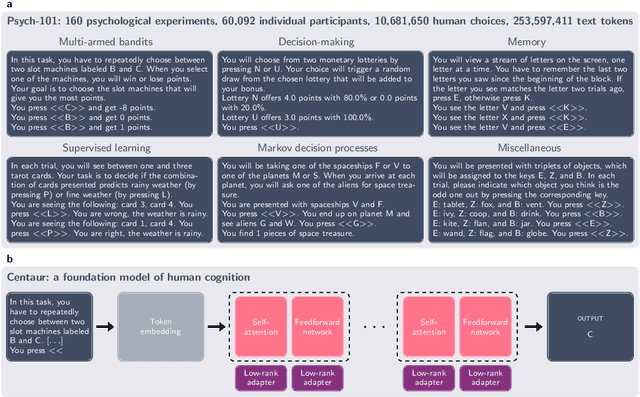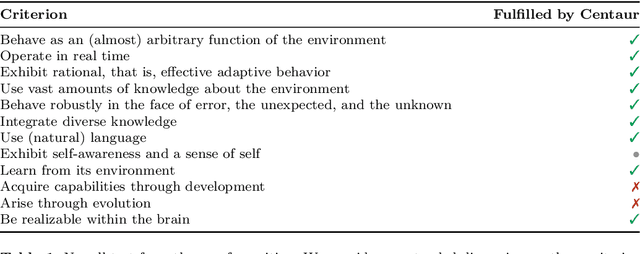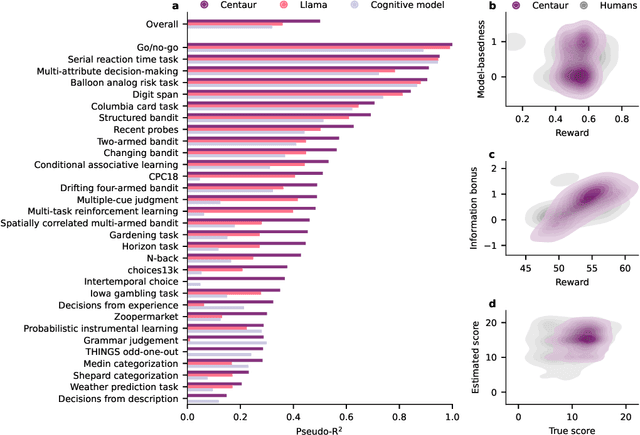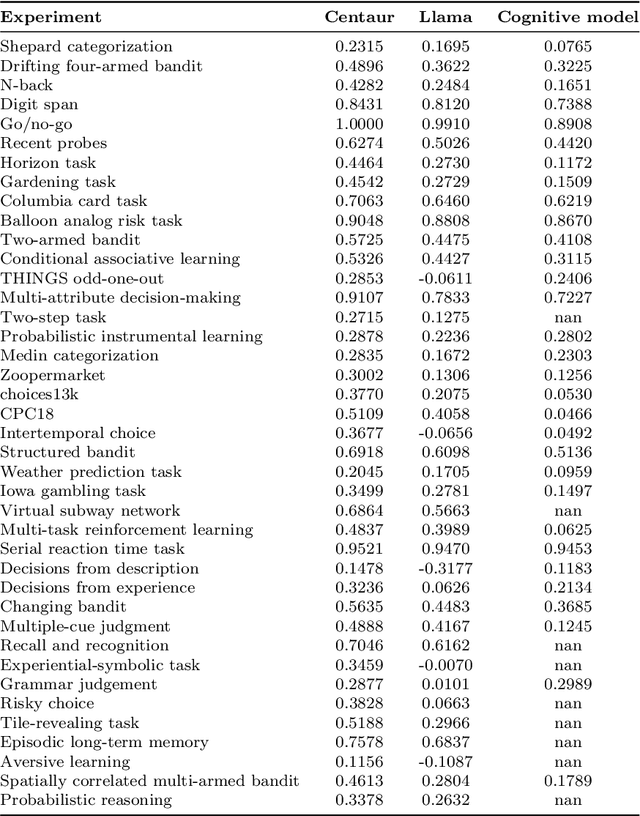Can Demircan
Centaur: a foundation model of human cognition
Oct 26, 2024



Abstract:Establishing a unified theory of cognition has been a major goal of psychology. While there have been previous attempts to instantiate such theories by building computational models, we currently do not have one model that captures the human mind in its entirety. Here we introduce Centaur, a computational model that can predict and simulate human behavior in any experiment expressible in natural language. We derived Centaur by finetuning a state-of-the-art language model on a novel, large-scale data set called Psych-101. Psych-101 reaches an unprecedented scale, covering trial-by-trial data from over 60,000 participants performing over 10,000,000 choices in 160 experiments. Centaur not only captures the behavior of held-out participants better than existing cognitive models, but also generalizes to new cover stories, structural task modifications, and entirely new domains. Furthermore, we find that the model's internal representations become more aligned with human neural activity after finetuning. Taken together, Centaur is the first real candidate for a unified model of human cognition. We anticipate that it will have a disruptive impact on the cognitive sciences, challenging the existing paradigm for developing computational models.
Sparse Autoencoders Reveal Temporal Difference Learning in Large Language Models
Oct 02, 2024Abstract:In-context learning, the ability to adapt based on a few examples in the input prompt, is a ubiquitous feature of large language models (LLMs). However, as LLMs' in-context learning abilities continue to improve, understanding this phenomenon mechanistically becomes increasingly important. In particular, it is not well-understood how LLMs learn to solve specific classes of problems, such as reinforcement learning (RL) problems, in-context. Through three different tasks, we first show that Llama $3$ $70$B can solve simple RL problems in-context. We then analyze the residual stream of Llama using Sparse Autoencoders (SAEs) and find representations that closely match temporal difference (TD) errors. Notably, these representations emerge despite the model only being trained to predict the next token. We verify that these representations are indeed causally involved in the computation of TD errors and $Q$-values by performing carefully designed interventions on them. Taken together, our work establishes a methodology for studying and manipulating in-context learning with SAEs, paving the way for a more mechanistic understanding.
Language Aligned Visual Representations Predict Human Behavior in Naturalistic Learning Tasks
Jun 15, 2023



Abstract:Humans possess the ability to identify and generalize relevant features of natural objects, which aids them in various situations. To investigate this phenomenon and determine the most effective representations for predicting human behavior, we conducted two experiments involving category learning and reward learning. Our experiments used realistic images as stimuli, and participants were tasked with making accurate decisions based on novel stimuli for all trials, thereby necessitating generalization. In both tasks, the underlying rules were generated as simple linear functions using stimulus dimensions extracted from human similarity judgments. Notably, participants successfully identified the relevant stimulus features within a few trials, demonstrating effective generalization. We performed an extensive model comparison, evaluating the trial-by-trial predictive accuracy of diverse deep learning models' representations of human choices. Intriguingly, representations from models trained on both text and image data consistently outperformed models trained solely on images, even surpassing models using the features that generated the task itself. These findings suggest that language-aligned visual representations possess sufficient richness to describe human generalization in naturalistic settings and emphasize the role of language in shaping human cognition.
 Add to Chrome
Add to Chrome Add to Firefox
Add to Firefox Add to Edge
Add to Edge